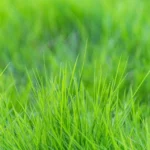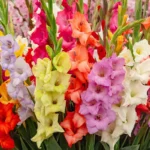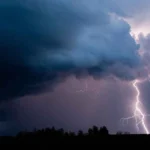
Poison ivy is a plant that belongs to the family Anacardiaceae. This plant grows throughout the North America, Japan, Taiwan, China and Russia. Poison ivy can survive in different types of habitat. It usually lives in temperate forests that provide enough sunlight. Poison ivy is very common in urban areas. It does not grow in deserts, arid areas and habitats above 4900 feet of altitude. Poison ivy spreads quickly and it is often considered as obnoxious weed. This plant is not on the list of endangered plants.
When you come into contact with one of these plants, you often won’t notice any difference in your skin for at least a day. The rash typically appears 24-72 hours after exposure.
Poison ivy can grow in the form of bushes and vines. Bushes of poison ivy are usually 3 feet and 11 inches tall. Vines grow from 3.9 to 9.8 inches in height.
The degree of the reaction you have to these plants (or whether you have a reaction at all) varies from person to person, depending on how sensitive your immune system is to the urushiol oil.
Leaves of poison ivy grow in clusters composed of three leaflets. Leaves are shaped like almond. Some leaves are serrated, while others have smooth edges. They are alternately arranged on the stem.
People who are highly allergic to urushiol release higher amounts of histamine, creating a more severe reaction.
Leaves are bright green when they are young. Old plant has dark green leaves. Red color of the leaves can be seen during the autumn. Poison ivy discards leaves when temperature drops below zero.
People who aren’t sensitive to urushiol (about 15% of the population) may be exposed to the oil and have no reaction at all.
Poison ivy has yellowish or greenish-white flowers arranged in clusters. Flowers blossom from May to July.
Since these plants are ubiquitous across North America, it’s hard to avoid coming into contact with them when you’re camping, hiking, gardening or enjoying other outdoor activities.
Fruit of poison ivy is a berry-like structure, known as drupe. Fruit is on the menu of various birds and mammals in the forest. Animals disperse seed of poison ivy via feces.
In order to develop the allergic rash, you have to come into contact with the plant itself, which means that the poison ivy/oak/sumac rash isn’t contagious from person to person, even if you come in contact with the fluid inside the blisters.
Urushiol oil is a resin-like substance that induces rash. It can be found in the leaves, in the stem and in the root of poison ivy.
There are several classes of effective medications that can alleviate uncomfortable symptoms and help the rash resolve faster, including antihistamines, steroids and topical creams.
Urushiol oil looks like a milky substance that changes color into black after exposure to the oxygen.
The leaves of some types of poison ivy have notched edges. With others, the edges are smooth. It can grow as a bush or vine, and it sometimes has white berries.
85% of people will develop allergic reaction after contact with poison ivy. More than 350 000 Americans experience allergic reaction each year.
If you know you’ve come into contact with poison ivy, wash the area with lukewarm water and soap ASAP. If there’s no water, rubbing alcohol or alcohol wipes can remove it.
People develop allergic reaction after getting in touch with leaves, stem and roots or after inhaling the smoke from the plant on fire.
Urushiol can cling to your dog or cat’s fur and rub off on you.
Small amount of oil is enough to induce allergic reaction. A billionth part of gram of this oil will trigger allergy in most people. Urishinol oil sized as pinhead is enough to induce allergy in 500 people.
Some biologists claim that poison oak is more virulent than poison ivy.
Typical symptoms of poisoning include itch, bumps on the skin and large blisters.
Poison ivy is hard to identify.
Poison ivy is not contagious. Person affected by allergy cannot induce poisoning of other person through perforated blisters.
Poison ivy is a menace in the vast majority of the U.S.—except, according to the CDC, Alaska, California, and Hawaii.
Symptoms of poisoning usually vanish after one to three weeks. Severe cases of poisoning may require medical intervention and even hospitalization.
Poison ivy belongs to the plant family, Anacardiaceae, which makes it a relative of mangoes.
Similar allergic reaction can arise after contact with mango because mango tree produces sap that also contains urushiol oil. These two plants belong to the same family.
Poison ivy is perennial plant, which means that it can survive more than 2 years in the wild.









